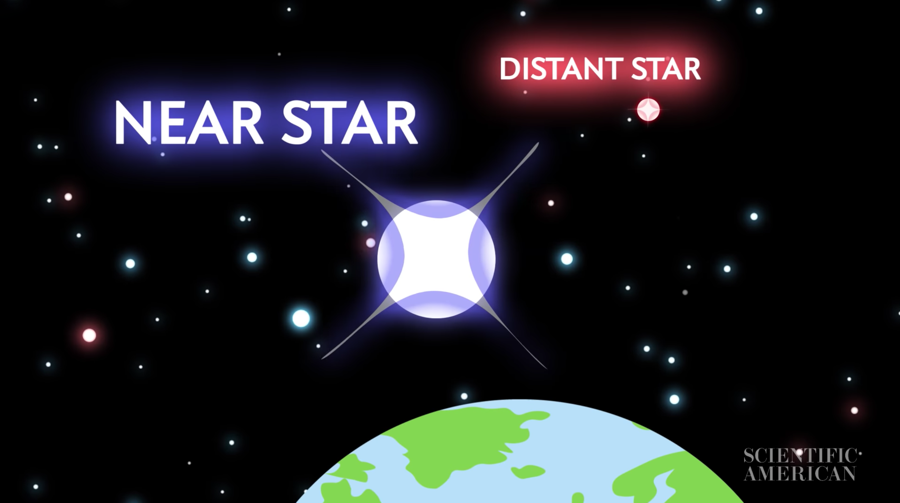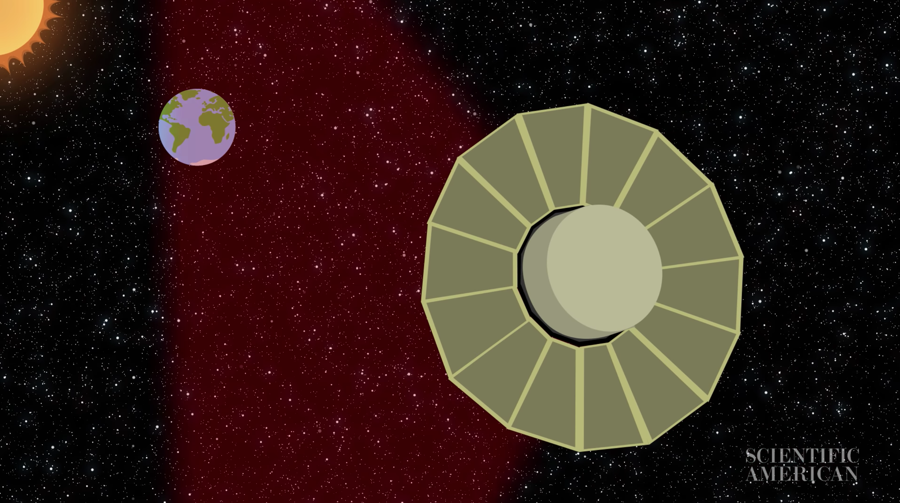How do we measure the distance to stars when those stars are millions of miles away? It might seem impossible, but astronomers use a clever math trick (that’s also a scientifically rigorous method for measuring astronomical distances): parallax.
Just as objects appear to shift when you move your eyes, stars appear to shift as the Earth orbits the Sun. By using this tiny shift, scientists can create triangles, do some trigonometry—a branch of math that helps us figure out things like distances, heights, and angles in practical ways—and uncover the vast distances to these celestial objects. This Scientific American animation demonstrates.
The European Space Agency’s Gaia spacecraft elevated this capability to new heights when it launched in 2013. Gaia uses two telescopes to take pictures of the stars in different portions of the sky that are separated by a constant 106.5º. Some context from The Conversation:
“The brightest stars will eventually be measured to the nearest five-hundred-millionth of a degree. That’s like using a telescope in London to see the width of a human hair in Rome.”
By precisely triangulating how far apart the star images are on the pictures, as well as measuring luminosity, temperature, and composition, we can figure out a lot of information, including how far away the stars are.
And by looking at the entire sky many times, the steady ESA telescope helps astronomers measure the distances to billions of stars accurately. In fact, Gaia’s data will piece together the largest, most precise three-dimensional map of the Milky Way ever created. From The Conversation
“To measure their positions and velocities accurately enough, the exact location of Gaia itself must be known to within 150 metres. Knowing its position at all times makes sure we have an accurate baseline so we can determine the location of another body by triangulating from known points.
“All this means that Gaia’s position and velocity need to be regularly known to high precision. Surprisingly, this can actually be achieved by tracking Gaia from the Earth’s surface, 1.5m kilometres away. This is no mean feat; at that distance 150 metres makes an angle (of the triangle) of just 1/180,000 of a degree, the apparent size of a 1p coin 200 kilometres away.”
That’s how triangles help astronomers map the Milky Way and help humans better understand our place the cosmos.
See some of Gaia’s resulting images on ESA.int.
Space! Triangles! Watch these related videos next:
• How do we measure the universe? – Royal Observatory, Greenwich
• How do we study the stars & measure extreme distances in space?
• Solar System, Milky Way, Laniakea: Our home supercluster
• Voyage To the Core, a 4K Milky Way time-lapse
• The Pythagorean theorem water demo
• How could you tunnel through a mountain 2,500 years ago?
Bonus: Why Do We Put Telescopes in Space? – MinutePhysics
Curated, kid-friendly, independently-published. Support this mission by becoming a sustaining member today.




